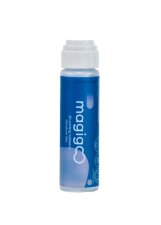BASF Ultrafuse 316L Metal Filament
Ultrafuse 316L is an innovative filament to produce 316L grade stainless steel parts.
It is designed for ultimate ease of handling on conventional Fused Filament Fabrication 3D printers. BASF Ultrafuse 316L combines greater freedom of design with a lower total cost of ownership – printing metal parts easier, faster and affordable. Parts printed with Ultrafuse 316L obtain their final properties, including hardness and strength, through the catalytic debinding and sintering process. The catalytic debinding technology was developed and introduced by BASF and has emerged as the industry standard.
Which 3D printers should I use with Ultrafuse 316L?
Designed for secure and easy handling on conventional, open-material Fused Filament Fabrication (FFF) printers, Ultrafuse 316L comes with a wide processing window. To help you succeed in 3D printing metal parts we provide printer processing guidelines including Ultrafuse 316L parameter sets. In addition, consultancy and on-site support are available to help ensure the material performs on your printer.
Benefits at a Glance
- Easy and affordable metal 3D printing
- Fast material exchange and easy handling
- For all open source FFF printers
- Produces parts of stainless-steel 316L metal
- Uniform particle distribution enhances mechanical properties
- High flexibility of filament enables successful printing in any FFF printers
- Compatible with both Bowden and direct drive extruders
Example Applications
- Tooling
- Jigs and fixtures
- Functional prototypes
- Small series production
Easy and cost effective 3D printing of metal parts with Ultrafuse 316L
We have developed Ultrafuse 316L to realise high-quality metal parts and high throughput. This state-of-the-art metal filament is suitable for use with any conventional Fused Filament Fabrication (FFF) printer. Following the print, the final properties of the part are then achieved through a debinding and sintering process developed by BASF, which has emerged as the industry standard.
Ultrafuse 316L is cost-effective, easy to process and meets the MIM industry standard for catalytic debinding and sintering. This innovative industry-grade metal-polymer composite supports a broad range of applications, including tooling, jigs and fixtures, small series production, functional parts, prototypes, and even jewellery.
Ultrafuse 316L formulates thermoplastic binders with 90 mass percent of highly-refined metal particles. Our filament has a non-slip surface allowing it to be applied in most Bowden or direct-drive extruders. Thanks to its high flexibility, it can be fed through complex idler pulleys and multiple filament transportation systems in printers – no extra drying required. As a filament, the metal-polymer composite comes with none of the occupational and safety hazards associated with the handling of fine metallic powders, making 3D printing of stainless-steel parts affordable, straightforward, and safe.
Example Applications
Process Instructions

Process Workflow “From Art to Part”

STEP 1. Print green parts using guidelines from BASF.
STEP 2. Purchase D&S coupon Ultrafuse 316L and receive shipping instructions via email.
STEP 3. Send to D&S for debinding and sintering.
STEP 4. Receive finished parts and start using.
Reference Links and Documents
Product Leaflet - Download
Technical Data Sheet - Download
User Guidelines - Download
Process Guidelines - Download
Safety Data Sheet - Download
Debinding Simulation Guidelines - Download
- Diameter1.75 mm, 2.85 mm
- Material TypeMetal
- ColorGrey
- Net Weight3 kg
- BrandBASF
- Tensile strengthXY - 561 MPa / 81.4 ksi; ZX - 521 MPa / 75.6 ksi
- Nozzle Diameter≥ 0.4 mm
- Bed materialGlass + approved glues* / polyimide tape (*Dimafix suggested)
- Bed Temperature90 – 120 °C / 194 – 248 °F
- Build Chamber Temperature-
- Nozzle Temperature230 – 250 °C / 446 – 482 °F
- Bending Radius1.75 mm: 5 ± 1 mm
2.85 mm: 10 ± 3 mm - Roundness1.75 mm: ±0.050 mm
2.85 mm: ±0.075 mm - Tolerance1.75 mm: ± 0.050 mm
2.85 mm: ± 0.075 mm - Sintered Part Density7850 kg/m3 / 490.1 lb/ft3
- Vickers Hardness128 HV10
- Elongation at BreakXY - 53 %; ZX - 36 %
- Yield strengthXY - 251 MPa / 36.4 ksi ; ZX - 234 MPa / 33.9 ksi
- Print Speed15 - 50 mm/s















